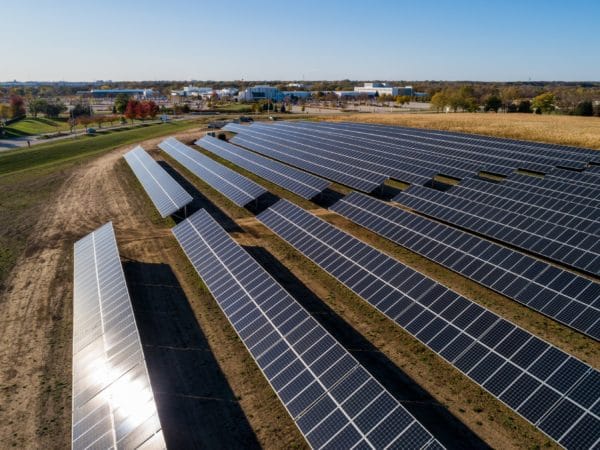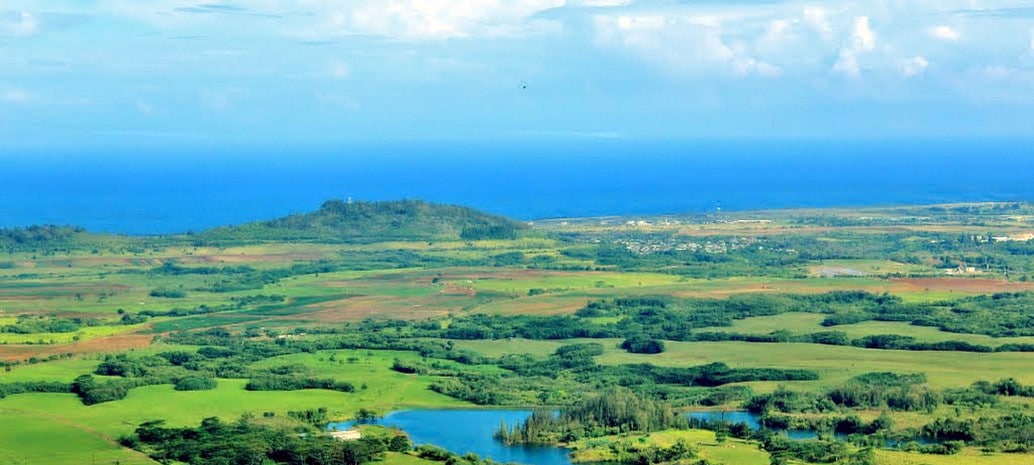Kaua‘i Island Utility Cooperative signed agreements with AES Corp. to develop, build and operate a solar pumped storage hydro project known as the West Kaua‘i Energy Project.
When operational, the solar array will provide up to 35 MW to the island’s grid and store up to 240 MWh for dispatch during evening peak. The hydro resources are expected to produce 24 MW on average daily, including 12 hours of storage to be used overnight.
A power purchase agreement (PPA) related to the project was filed with the Hawai‘i Public Utilities Commission in late 2020.
The pumped hydropower and battery energy storage are designed to shift most of the project’s output to the nighttime peak. In total, the project is expected offset the use of 8.5 million gallons of fossil fuels annually and supply irrigation water delivery to support diversified agriculture on state-owned lands.
In 2018, AES and the utility cooperative broke ground on a 28 MW project that used SunPower E-Series PV modules mounted on a single-axis trackers. The project was paired with a 20 MW/100 MWh lithium-ion battery system based on 13,000 Samsung SDI battery modules.
That project enabled the cooperative to meet around a third of the island’s electricity demand with solar; a combination of biomass and customer-owned solar lifted renewables’ total to around 60% of the island’s electricity mix. With the latest AES project, that portion is expected to reach 80%.
Kaua’i has no electrical interconnection to other islands, which means it must balance supply and demand on its own grid, a sometimes-challenge as high levels of renewables are introduced. Resource options on the island also are limited due to the presence of endangered birds; that means no wind turbines have been built, which leaves the cooperative unable to tap daytime solar and overnight wind.
To date, AES has more than 200 MW of solar, solar + storage, and wind resources in operation or under development across Hawai‘i.
New Mexico EV plan
El Paso Electric filed a Transportation Electrification Plan (TEP) with the New Mexico Public Regulation Commission (NMPRC) for approval. The goal of this two-year plan is to increase the use of electric vehicles by incentivizing the installation and usage of smart charging infrastructure through rebate and pilot rate programs while addressing the challenges associated with the lack of awareness of both the technology and benefits of EVs.
The proposed plan includes:
- A Customer Outreach Program to improve familiarity and awareness of EVs, and the benefits of transportation electrification.
- Customer rebate pilot programs for smart charging infrastructure for residential and commercial customers.
- Pilot rate options to help customers save money by charging during off-peak times.
- An Electrification Grid Impact Study to help guide EPE’s system planning efforts based on a projected increase of EV adoption and electricity consumption.
The utility said it expects final approval in the second quarter of 2021, with a launch by the third quarter of 2021.
Campus solar enters service
Pivot Energy and Joliet Junior College completed a 1.3 MW solar system at the college’s main campus in Illinois. The solar array consists of 3,542 solar panels and was installed by solar developer Pivot Energy. It is expected to save the college more than $1.6 million in electricity expenses over 25 years.

Pivot Energy
The system is expected to offset the college’s total energy consumption by 22.5%, making the campus one of the greenest in the state.
The panels were provided by retired Joliet oncologist Dr. Sarode Pundaleeka with Sunlarge Industries. Pundaleeka said he hopes the solar array will inspire future generations to pursue careers in clean energy and convey the importance of sustainability to all campus visitors.
Since 2000, JJC has completed over 50 sustainability projects, including opening multiple LEED-certified buildings. In addition to the solar project, a pollinator habitat mixture will be planted around the panels using native grasses and forbs, which will support bee and butterfly habitats and aid in drought and stormwater mitigation.
Consumers Energy commissions new solar
Consumers Energy, Pine Gate Renewables and Kayne Anderson Capital Advisors, L.P., said that five new solar energy projects in Genesee County and three in Saginaw County, Michgan, are online.
The eight sites were built and are operated by Pine Gate Renewables and are owned by Kayne Anderson. Consumers Energy has 20-year agreements to purchase the energy from the projects. Each solar farm has a 2 MW capacity.
The solar farms add to Consumers Energy’s 10 MW of solar energy capacity previously available to serve its customers.
Consumers Energy has agreements to purchase energy from six additional Kayne Anderson solar projects elsewhere in Michigan which are scheduled to begin operating this month.
Southern issues Sustainable Financing Framework
Southern Company said it published a Sustainable Financing Framework. It said the framework will allow it and its business units to issue sustainable financing instruments and allocate proceeds to investments in eligible green and social project categories.
Include are projects related to renewable energy, energy efficiency, access to essential services (such as education and telecommunications), and employment advancement and development opportunities.
Eligible social projects include the procurement of products and services from diverse suppliers, education assistance for minority people, as well as economic advancement and development opportunities for underserved employees, communities and students.
The inaugural bond under the Framework, a $400 million green bond, was issued January 8 by Southern Power Co. With that issue, Southern said that its system to date has issued nearly $3.9 billion in green bonds.
The utility holding company said its framework aligns with The Green Bond Principles, 2018; Social Bond Principles, 2020; Sustainability Bond Guidelines, 2018; and Green Loan Principles, 2018.
This content is protected by copyright and may not be reused. If you want to cooperate with us and would like to reuse some of our content, please contact: editors@pv-magazine.com.









By submitting this form you agree to pv magazine using your data for the purposes of publishing your comment.
Your personal data will only be disclosed or otherwise transmitted to third parties for the purposes of spam filtering or if this is necessary for technical maintenance of the website. Any other transfer to third parties will not take place unless this is justified on the basis of applicable data protection regulations or if pv magazine is legally obliged to do so.
You may revoke this consent at any time with effect for the future, in which case your personal data will be deleted immediately. Otherwise, your data will be deleted if pv magazine has processed your request or the purpose of data storage is fulfilled.
Further information on data privacy can be found in our Data Protection Policy.